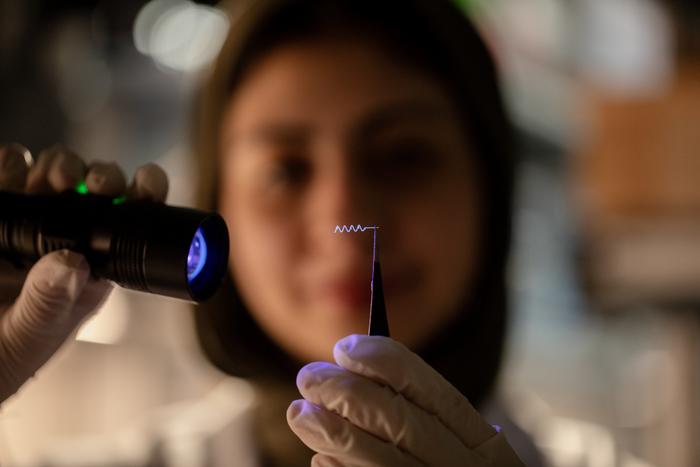SPIRAL device offers safer, smarter drug delivery to the brain
Posted: 16 October 2025 | Drug Target Review | No comments yet
Scientists have created a flexible brain implant, called SPIRAL, capable of delivering drugs to multiple regions with pinpoint accuracy.


Researchers at NYU Abu Dhabi (NYUAD) have designed a new type of brain implant that can precisely deliver drugs to multiple regions of the brain, opening new possibilities for treating complex neurological disorders.
The device, known as Strategic Precision Infusion for Regional Administration of Liquid (SPIRAL) – is a thin, flexible tube designed to release medication from several points along its length. This allows doctors and scientists to reach larger and more intricate areas of brain tissue while keeping the device as small as possible.
Reaching multiple regions safely
“Neurological disorders often come from very specific regions of the brain, but our current tools for targeting these areas are limited,” said Khalil Ramadi, research leader and Assistant Professor of Bioengineering at NYUAD. “SPIRAL allows us to reach several regions at once without adding extra risk, which could change how we deliver therapy for these conditions.”
Biomarkers are redefining how precision therapies are discovered, validated and delivered.
This exclusive expert-led report reveals how leading teams are using biomarker science to drive faster insights, cleaner data and more targeted treatments – from discovery to diagnostics.
Inside the report:
- How leading organisations are reshaping strategy with biomarker-led approaches
- Better tools for real-time decision-making – turning complex data into faster insights
- Global standardisation and assay sensitivity – what it takes to scale across networks
Discover how biomarker science is addressing the biggest hurdles in drug discovery, translational research and precision medicine – access your free copy today
The study shows how SPIRAL’s carefully designed openings control the flow of medication along its structure. The team combined advanced computer modelling with extensive laboratory testing to verify the device’s precision, safety and effectiveness.
Safe, effective, and minimally invasive
Tests showed that the implant did not cause higher levels of inflammation than standard devices, suggesting it could be suitable for therapeutic use.
“Our design solves a big problem with existing brain implants, which usually deliver drugs from just one or two points,” explained NYUAD research assistant and co-lead author Batoul Khlaifat. “SPIRAL makes it possible to distribute drugs more evenly and across larger regions, while still being safe and minimally invasive.”


The device, called SPIRAL (Strategic Precision Infusion for Regional Administration of Liquid), is a thin, flexible tube designed to release medication at several points inside the brain. Credit: NYU Abu Dhabi.
Advanced design for complex brain therapies
One of SPIRAL’s key innovations is its helical shape and precisely tuned outlets, which allow uniform drug distribution through multiple regions of tissue. This is especially crucial for treating aggressive brain diseases such as glioblastoma, where medication must often be delivered directly into large volumes of brain tissue to bypass the blood-brain barrier (BBB).
One of SPIRAL’s key innovations is its helical shape and precisely tuned outlets, which allow uniform drug distribution through multiple regions of tissue.
“When diseases like glioblastoma advance, treatment often means delivering drugs straight into a large volume of the brain to bypass the blood-brain barrier,” said NYUAD alum Mahmoud Elbeh, now a PhD candidate in Ramadi’s lab. “Our helical form with tuned, evenly spaced outlets lets us cover more tissue from one insertion. By using CFD to set port diameters for equal flow, we create a platform that could translate to drug delivery in other solid organs.”
Future potential beyond drug delivery
Beyond pharmacological applications, the research team sees SPIRAL as a versatile platform that could also provide electrical stimulation or integrate with other advanced therapies. Such capabilities could lead to new treatments for epilepsy, Parkinson’s disease and a wide range of neurological disorders.
Related topics
Bioengineering, Central Nervous System (CNS), Drug Delivery, Drug Discovery Processes, Neurosciences, Translational Science
Related conditions
Epilepsy, Glioblastoma, Neurological disorders, Parkinson's
Related organisations
NYU Abu Dhabi








